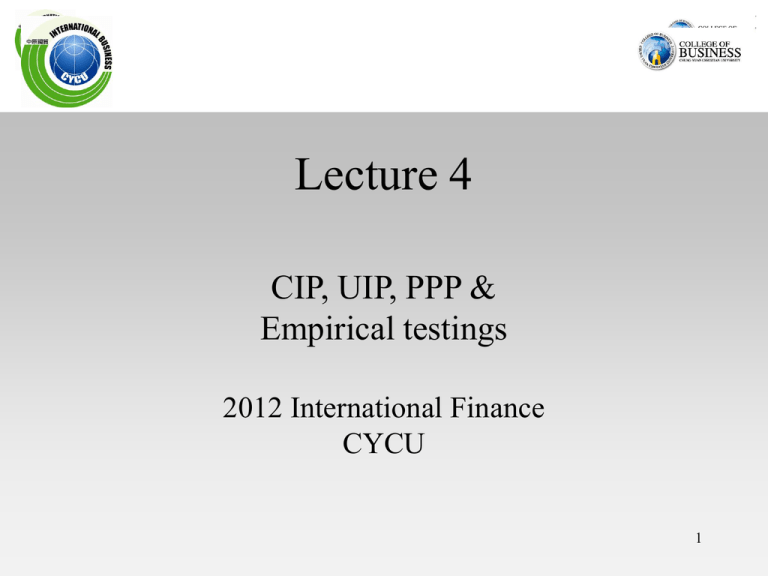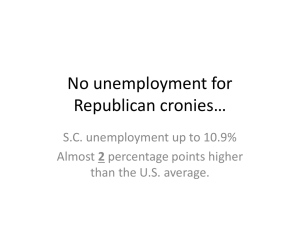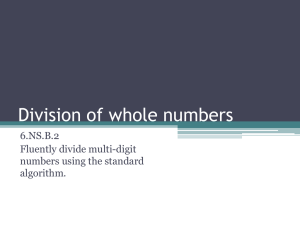trade - WordPress.com
advertisement

Lecture 4 CIP, UIP, PPP & Empirical testings 2012 International Finance CYCU 1 Fundamentals of Int’l finance • Three parity theories from different perspectives • Capital flow – CIP (covered interest rate parity) – UIP (uncovered interest rate parity) • Good flow – PPP (purchasing power parity) • Stemming from LOP (law of one price) 2 4.1 International Financial Markets • Foreign Exchange – General meaning: A price of foreign currencies: s – No standard way to express – Direct quotations ($domestic/$foreign) • A price of foreign currencies (in domestic dollars) • e.g., S = 29 (NTD/USD) – Indirect quotations ($foreign/$domestic) • A price of domestic currency (in foreign dollars) • e.g., e = (1/s =1/29) = 0.0345 (USD/NTD) 3 Yahoo finance 4 Bank of Taiwan 5 Notation: S • Foreign Exchange in this course – A price of foreign currencies in terms of domestic dollars: (the view of home country) (s ($domestic/$foreign) • Terminologies – Under flexible exchange regimes Appreciation vs Depreciation • S↓ vs S↑ – Under fixed exchange regimes Revaluation vs Devaluations • S↓ vs S↑ 6 Foreign Exchange (FX) • General features – traded over the counter through a spatially decentralized dealer network – High liquidity: huge transaction volume • 1998, daily volume of foreign exchange transactions involving the US dollar and executed within in the U.S was 405 billion dollars • i.e., annual volume of 105.3 trillion dollar … (1998 US GDP was approximately 9 trillion dollars) • Bilateral-rate vs cross-rate 7 Equilibrium condition in cross-rate markets • given by the absence of unexploited triangular arbitrage profits • triangular arbitrage – Buy/sell one FX and sell/buy them • Equilibrium S1 = Sx3 S2 – S1 be the dollar price of the pound, S2 – be the dollar price of the euro, and – Sx3 be the euro price of the pound. 8 Numerical example • If you get price quotations of – S1 =1.60 (USD/GBP) (dollars per pound), – S2 =1.10 (USD/EUR) (dollars per euro, and ) – Sx3 = 1.55 (EUR/GBP) (euros per pound) • An arbitrage strategy is to – – – – put up 1.60 dollars to buy one pound, sell that pound for 1.55 euros and then sell the euros for 1.1 dollars each. You begin with 1.6 dollars and end up with 1.705 dollars, 9 Three Transaction Types of FX(1) • 1. spot transactions – for immediate (actually in two working days) delivery. – Spot exchange rates are the prices at which foreign currencies trade in this spot market. • 2. swap transactions – agreements in which a currency • sold (bought) today is to be repurchased (sold) at a future date. • The price of both the current and future transaction is set today 10 Example Swap of FX • Today – you might agree to buy 1 million euros at 0.98 million dollars • In six months – sell the 1 million euros back time for 0.95 million dollars. • The swap rate is the difference between the repurchase (resale) price and the original sale (purchase) price. • The swap rate and the spot rate together implicitly determine the forward exchange rate. 11 Three Transaction Types of FX(2) • 3. forward transactions – current agreements on the price, quantity, and maturity or future delivery date for a foreign currency. • Keys of forward transactions: – Price • The agreed upon price is the forward exchange rate. – Quantity – quantity 12 Eurocurrency Important! Not Euro Dollar • Def: a foreign currency denominated deposit at a bank located outside the country • offshore bank. – the deposit does not have to be in Europe • Example: – A US dollar deposit at a London bank is a Eurodollar deposit – A yen deposit at a San Francisco bank is a Euro-yen deposit. 13 London Interbank Offer Rate (LIBOR) • LIBOR – The interest rate at which banks are willing to lend to the most creditworthy banks participating in the London Interbank market. • premium to LIBOR – the rate for loans to less creditworthy banks and/or companies outside the London Interbank market 14 4.2 Covered Interest Parity • Spot, forward, and Eurocurrency rates are mutually dependent through the covered interest parity condition. – Let it: the date t interest rate i∗t:1-period Eurodollar deposit (the interest rate on an Euroeuro deposit rate) St: the spot exchange rate (dollars per euro), Ft: the 1-period forward exchange rate. – CIP • is the condition that the nominally risk-free dollar return from the Eurodollar and the Euroeuro deposits are equal. 15 Interpretation of CIP home deposit returns = FX returns in future home dollars • “Future” FX Rate is fixed by Ft – No FX risk that is… “risk” is covered… 16 Arbitrages in CIP > • Better deposit returns in home dollars < • Better deposit returns in FX dollars (after converting them into home dollars) • In equilibrium: 17 Practice Example • suppose there are – no transactions costs, and you get the above – 12-month eurocurrency forward exchange rate and spot exchange rate, and interest rate quotations • Which way you would like to put money? 18 Your arbitrage strategy • (1+it) =1.0678 • (1+it)Ft/St = 1.0178 • So, your strategy – borrow 0.9804 euros today – convert them to 1/St =1 dollar, – invest in the eurodollar deposit with future payoff 1.0678 • But you will need only (1 + i∗t )Ft/St = 1.0178 dollars to repay the euro loan. – Note that this arbitrage is a zero-net investment strategy since it is financed with borrowed funds. 19 logarithmic approximation • After taking log of the above eq. to get an specification for empirical testing 20 4.3 Empirical Testing of Theories • Theoretic form – Sometime no standard math f(.) • Empirical Specifications – – – – Linear approximation Log transformation Taking 1st difference of log variable Selection of dependant/independent variables • Stationarity vs Non-stationarity in data – Stationarity => OLS – Non-stationarity => Co-integration • Hypothesis building • Interpretations 21 Theory in math form • Relationship between variables Y = f(X, W) – Not necessary in linear form – e.g., Y = cXaWb 22 Theoretic forms of a Theory • In general – Y = f(X, W) – A theory may only tell that: X↑ => Y ↑ or W↑ => Y ↑ • e.g., CIP it ↑ => Ft ↑ or it ↑ => St ↑ • How about an increase in i*t ? 23 Empirical Specifications • Linear approximation – Inference (forecasting) considerations • Log transformation – Let non-linear form be linear • Taking 1st difference of log variable – Transform non-stationary variables • Selection of dependant/independent variables – Which variable causes what? 24 Approximations of Theories for empirical testing • Linear approximation – The linear OLS approach in levels Y = c + a1 X + a2 W + e – c, a1, a2 to be estimated 25 About the linear approximation • Actual f() vs linear approximation Y Y = f(X, W) Y = c + a1 X + a2 W X 26 Forecast in the linear approximation • Forecasting for actual f() vs linear approximation Y Ytheory YOLS Y = f(X, W) Y = c + a1 X + a2 W X 27







